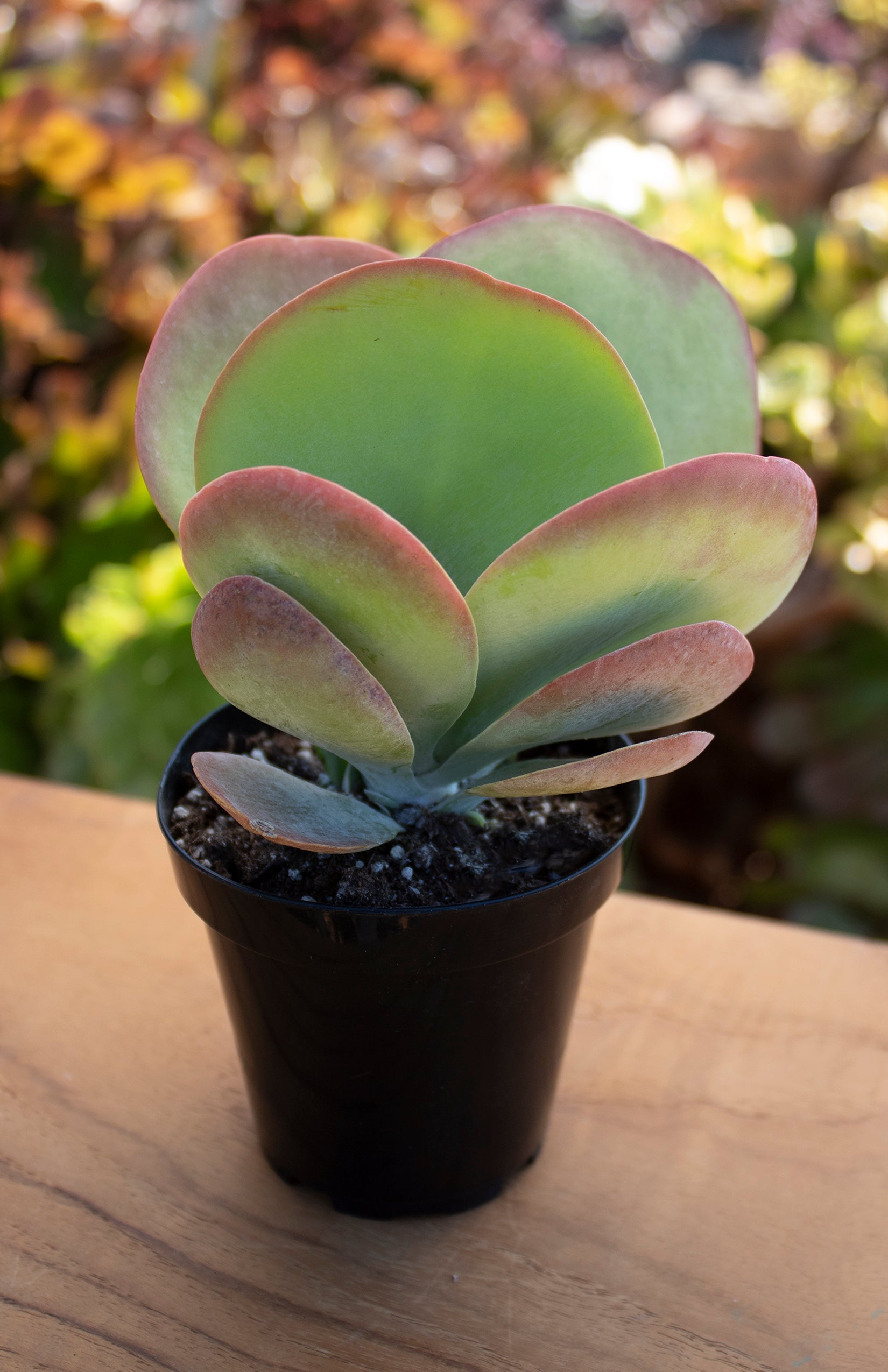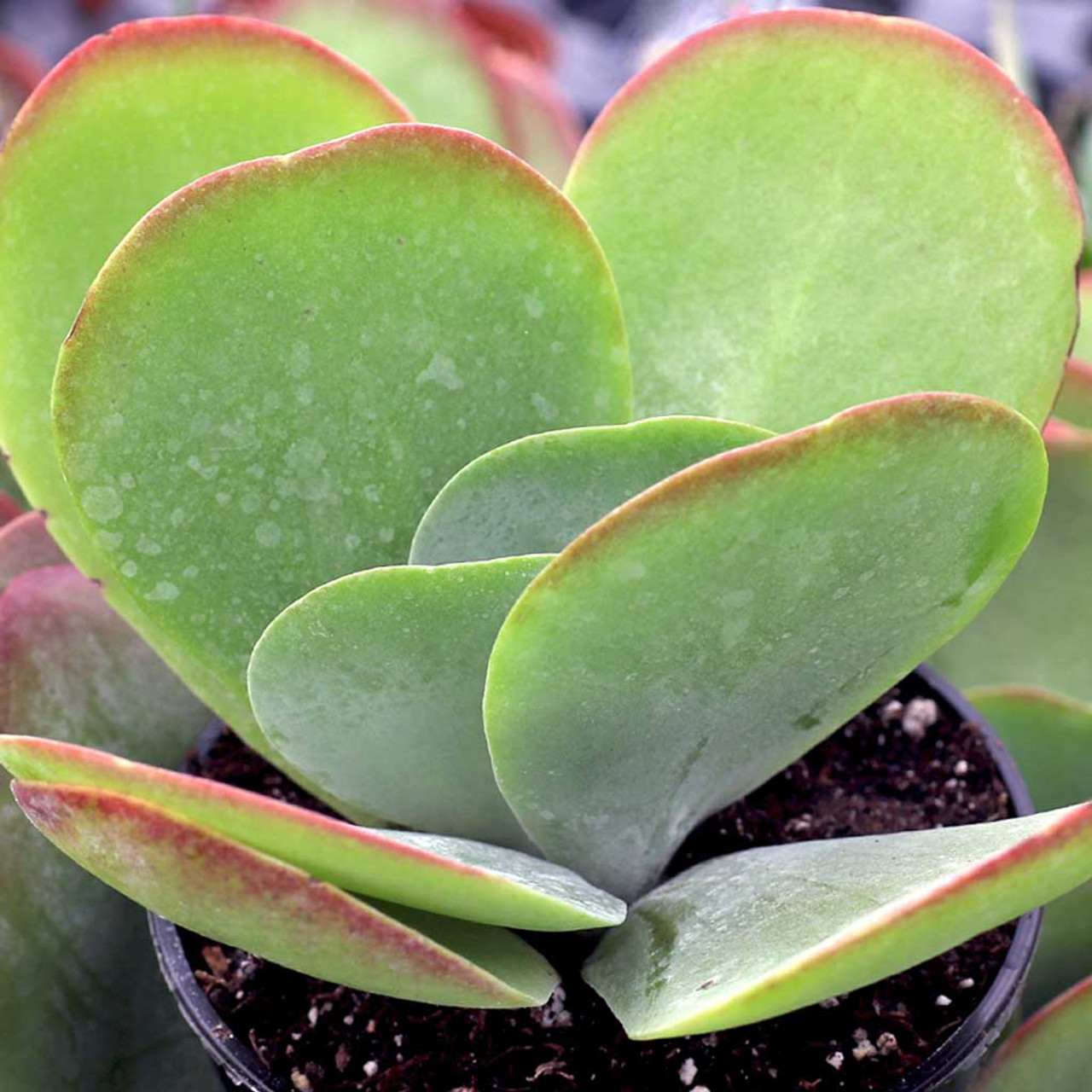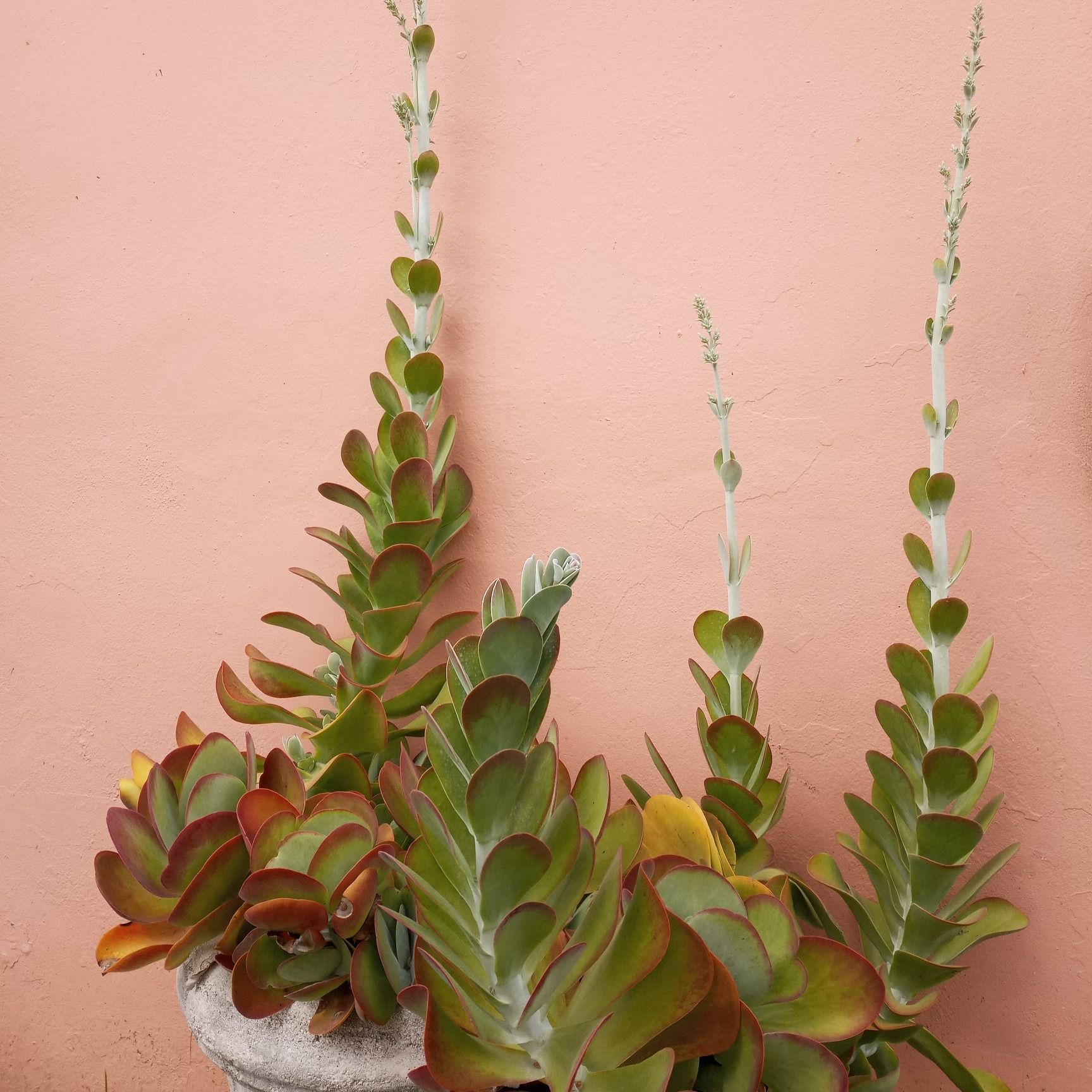Kalanchoe luciae has flat, smooth leaves that change to a striking red color when exposed to the right amount of sunlight. The plant is monocarpic, but it can be reproduced easily through offsets.
Table of Contents
Care and Propagation Information
Kalanchoe luciae, also known as the “Flapjack” or “Paddle Plant,” is an evergreen with yellow blossoms that emerge during late Winter to early Spring.
Watering
The best way to care for a “Paddle Plant” is to employ the “soak and dry” approach, in which the soil is completely dried out between waterings. This method is typical for succulents.
Be sure to grab our complimentary watering guide to understand when succulents may be getting too much water and how to prevent it.
Where to Plant
If you live in a region with temperatures below 20° F (-6.7° C), it’s best to grow Kalanchoe luciae in a container that can be brought indoors during cold weather. Make sure to place the pot in an area of your garden that receives at least 6 hours of direct sunlight a day and enjoys full to partial sun.
Often Mistaken For
Kalanchoe luciae and Kalanchoe thyrsiflora are closely related succulents, yet they display some distinct characteristics. In response to stress, Kalanchoe luciae develops a reddish hue while Kalanchoe thyrsiflora tends to take on a paler green shade.
How to Propagate Kalanchoe luciae “Flapjack”
It is possible to reproduce Kalanchoe luciae “Flapjack” or “Paddle Plant” through leaves, cuttings, or offsets.
Leaves
It can be challenging to propagate “Flapjack” using leaves, but it is possible.
To propagate a leaf, carefully twist it away from the stem, so that the entire leaf is removed without leaving any parts on the stem. This will increase the likelihood of a successful propagation.
Let the leaf sit for a couple of days so that the cut area can dry and form a protective layer before it is placed in soil that drains easily.
Cuttings
To propagate Kalanchoe luciae “Flapjack”, take a sterile knife or pair of scissors and cut a leaf from the main plant. Allow the leaf to dry out for a few days before placing it on soil with good drainage. Water when the soil is completely dry.
Offsets
Cut the “Flapjack” stems at the base with a clean, sharp knife or scissors, leaving small offsets behind. Allow the offsets to sit out on a dry surface for one to two days before planting them in well-draining soil.
Care and Propagation Information
General Care for Kalanchoe luciae “Flapjack”
Watering
The best way to care for a “Paddle Plant” is to employ the “soak and dry” approach, in which the soil is completely dried out between waterings. This method is typical for succulents.
Be sure to grab our complimentary watering guide to understand when succulents may be getting too much water and how to prevent it.
Where to Plant
If you live in a region with temperatures below 20° F (-6.7° C), it’s best to grow Kalanchoe luciae in a container that can be brought indoors during cold weather. Make sure to place the pot in an area of your garden that receives at least 6 hours of direct sunlight a day and enjoys full to partial sun.
Often Mistaken For
Kalanchoe luciae and Kalanchoe thyrsiflora are closely related succulents, yet they display some distinct characteristics. In response to stress, Kalanchoe luciae develops a reddish hue while Kalanchoe thyrsiflora tends to take on a paler green shade.
How to Propagate Kalanchoe luciae “Flapjack”
It is possible to reproduce Kalanchoe luciae “Flapjack” or “Paddle Plant” through leaves, cuttings, or offsets.
Leaves
It can be challenging to propagate “Flapjack” using leaves, but it is possible.
To propagate a leaf, carefully twist it away from the stem, so that the entire leaf is removed without leaving any parts on the stem. This will increase the likelihood of a successful propagation.
Let the leaf sit for a couple of days so that the cut area can dry and form a protective layer before it is placed in soil that drains easily.
Cuttings
To propagate Kalanchoe luciae “Flapjack”, take a sterile knife or pair of scissors and cut a leaf from the main plant. Allow the leaf to dry out for a few days before placing it on soil with good drainage. Water when the soil is completely dry.
Offsets
Cut the “Flapjack” stems at the base with a clean, sharp knife or scissors, leaving small offsets behind. Allow the offsets to sit out on a dry surface for one to two days before planting them in well-draining soil.
FAQ
How do you take care of Kalanchoe luciae?
Grow K. luciae in direct sunlight in well-drained soil. Avoid planting in overly shaded areas, as the plant will become lanky and won’t develop the red edges on the leaves. Keep the area around the plant free of organic mulches, which can trap moisture, and opt instead for a gravel mulch.
How do you care for Kalanchoe luciae indoors?
Kalanchoe, also known as the paddle plant, thrives in a sunny to partially shaded outdoor environment. When kept indoors, this houseplant should be placed in a bright, well-lit area. In extremely hot weather, it is recommended to protect the red pancakes from direct sunlight, as too much heat can damage the cactus.
Can Kalanchoe take full sun?
The Kalanchoe plant flourishes when placed in direct sunlight and in soil that drains well. It is also possible for it to grow in a brightly lit indoor environment. However, it may become thin and weak if not exposed to enough light.
How do you take care of a kalanchoe plant indoors?
In order to properly care for a Kalanchoe, it should be placed in a well-draining soil, and watered only occasionally and thoroughly. It should also be exposed to four hours of direct sunlight and 14 hours of darkness for 6 to 11 weeks, and kept in a low humidity environment to prevent root rot from over-watering.
Is Kalanchoe luciae poisonous?
Kalanchoe and Euphorbia succulents may be hazardous, but it is wise to take precautionary measures with all house plants, making sure to keep them away from children and animals.



